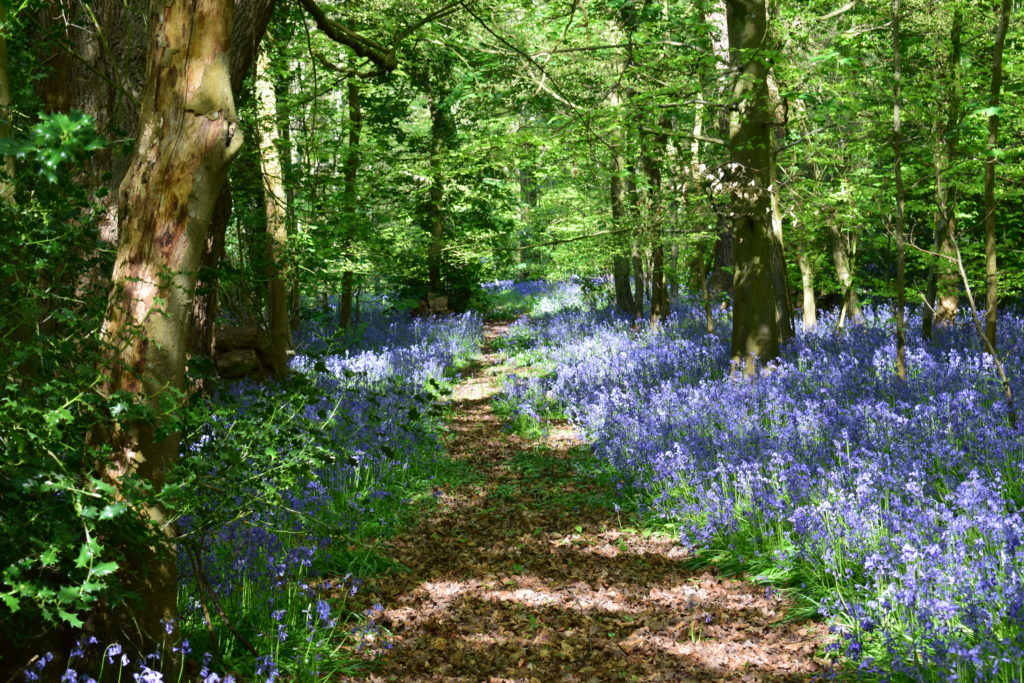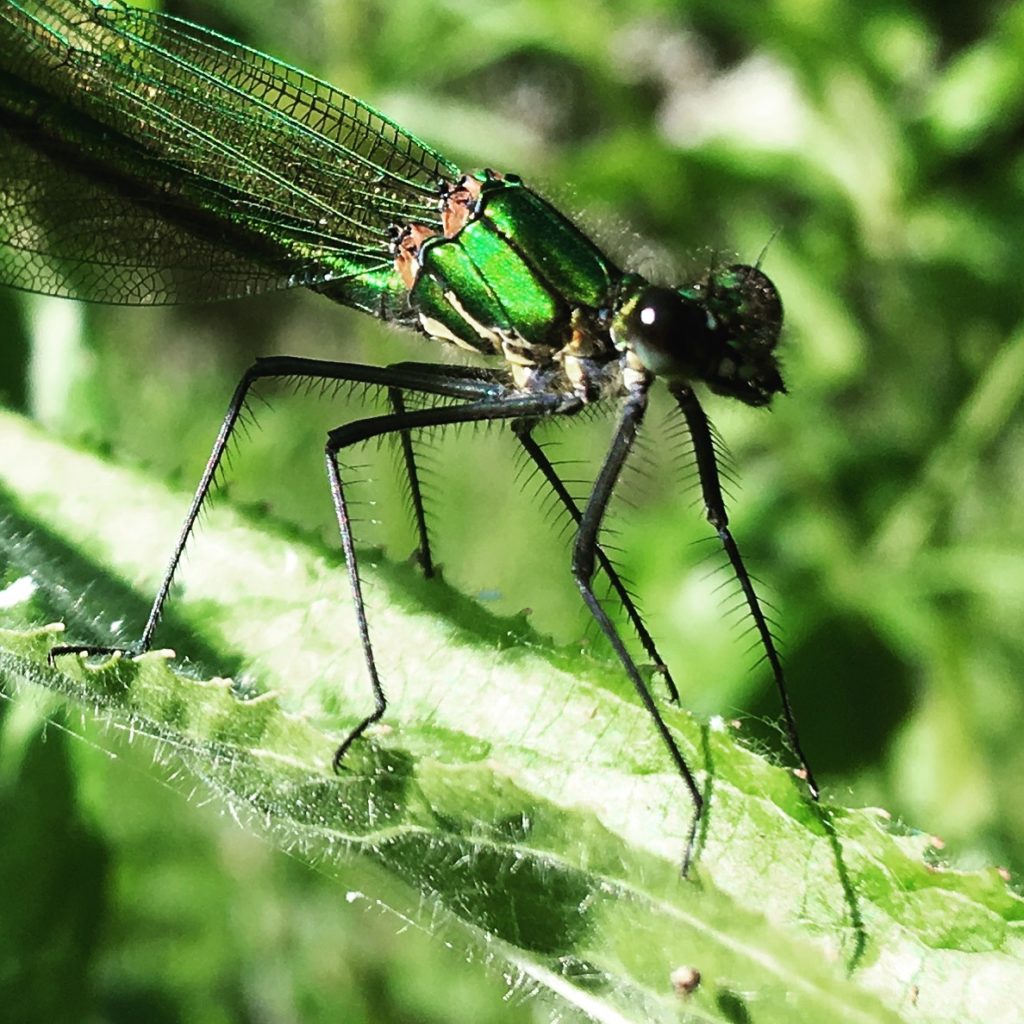Lockdown meant a slight delay to this year’s annual spring wildlife survey, but over just two days Redwood Valley offered up countless sights and sounds to make the heart soar.
As always the birds dominated, with frantic feeding of nestlings and fledglings in every corner of the valley. Beneath the footbridge in front of the kitchen/dining area hangs a nestbox aimed at grey wagtails or possibly dippers, but each year the wrens move in, and why shouldn’t they? This year they had a brood of hungry chicks, and getting close enough to photograph the nest without disturbing them proved quite easy. With the brook so rich in insect life, the parent birds had only to drop down onto the banks to gather beakfuls of prey.
It was while this was happening that a weasel appeared at the top of the bank under the bridge, just a couple of feet away from me — too close to focus on with the lens I was using — clearly drawn to the sound of young birds. These feisty little predators will tackle prey much larger than themselves, but a brood of young wrens would make a handy snack, especially if this individual had mouths to feed too. Fortunately the suspended nestbox must have proved too much of a challenge, as the chicks remained untouched over the two days.
Throughout the valley great tits, blue tits, marsh tits, chiffchaffs and blackcaps flew back and forth with food, while at the bottom end of the brook, near the wildlife pond, pairs of recently arrived redstarts and spotted flycatchers — which are later breeders — took advantage of the abundant insect life to refuel prior to nesting. Just along from the treetop cabin, a pair of great spotted woodpeckers was feeding young high in a dead elm. The nestlings have a vivid and rather comical red cap, which will eventually recede to the back of the head in the male birds and totally disappear in the females.
But for nesting activity, this year belonged to the ancient oaks, which with their countless holes and cavities simply teemed with bird life. I was able to locate and photograph the active nests of two charismatic oak specialists, the treecreeper and nuthatch. Treecreepers nest behind loose bark, making their nests notoriously hard to find. A night of sleeping under the stars had taken its toll on me, so I went for an afternoon nap beneath one of the oaks and, as luck would have it, I chose the right tree. A small movement above me caught my eye — there was a treecreeper with a beakful of food, edging towards a small gap in the
bark. The gap was just large enough to insert the corner of my phone and photograph the chicks huddled in what seemed like a very safe and cosy nest.
The nuthatch nest was considerably higher, but even through my lens I could make out the mud used to cement up the hole, allowing only just enough space for the parent birds to enter.
The other hole specialists to feature, with a large and established colony up in the ancient oaks, were the jackdaws. The gurgling sound of hungry chicks seemed to emanate from every tree. I couldn’t resist reaching into one of the lower holes to take a closer look at one of these very quirky chicks, with its piercing blue eyes and mischievous character. Adorable, if not very cute.
On the side of another oak, just a few yards from the treecreeper nest, I was pleased to find a brood of song thrush chicks. The rich, clear, deliberate song of these birds had been a dominant feature of my evenings here. They seem to be able to turn up the volume to 11 when required, and were especially vocal this year.
Birds of prey are always active in the valley, and include red kites, sparrowhawks and the occasional goshawk. But the buzzards are the most abundant, and can often be seen lurking in the oaks, where no doubt they pick off the occasional squirrel. A roadkill squirrel presented the opportunity to lure one down in front of one of the trail cameras, and it visited several times (we had tied the carcass down to prolong the visits).
The wildlife pond is maturing nicely, this year presenting a glorious show of dancing mayflies and swooping damselflies. The dragonflies are also appearing, so look out for these if you visit us this summer. If you are lucky, a male blue-bodied darter may still be active around the pond. Later in the summer you are sure to see the UK’s largest dragonfly — the beautiful blue- and green-bodied emperor dragonfly. There will be froglets and toadlets to delight the children too, as the tadpoles seemed to be thriving.
At night an hour with the bat detector (and the essential glass of red) picked up the usual suspects, including common and soprano pipistrelles, although the standout performance as always came from the noctules over the brook, whose very low-frequency calls produce an intense techno beat on the detector. The detector is available for use by the Redwood Valley guests, with a list of frequencies to help identify the species present. Children love to get involved in this. Who doesn’t like a night walk?
Of course the bats are feeding on night-flying insects, including moths. After returning from our bat walk, we were greeted by a myriad moth species circling around the lights in the open-fronted kitchen/dining area. Species present included ermine, yellow underwing, silver-Y, burnished brass, and heart and dart. Moth names are pleasingly simple and often describe directly what you see.
Early mornings are a productive time for wildlife sightings. A quiet stroll thought the woods is likely to result in a roe-deer sighting. This year we came very close to a young buck in fine condition.
And finally, what about the resident dog otter, which has starred on the trail cam footage over the last couple of years? After several rainless weeks the brook was as low as I have seen it, so I was pessimistic about once again seeing any signs of him visiting, but then right at the top end of the valley, a stone’s throw from the kitchen/dining area, there were the unmistakable spraints of an otter, which are used as territorial calling cards. In these were the usual fish bones and scales, but also traces of feathers, confirming that otters are opportunists and that even the birds (especially recent fledglings) are not safe. How special to have an apex predator to add to the list of wild delights that await your visit





